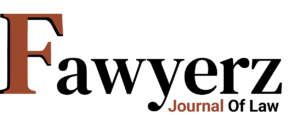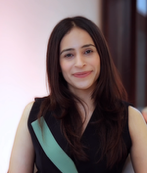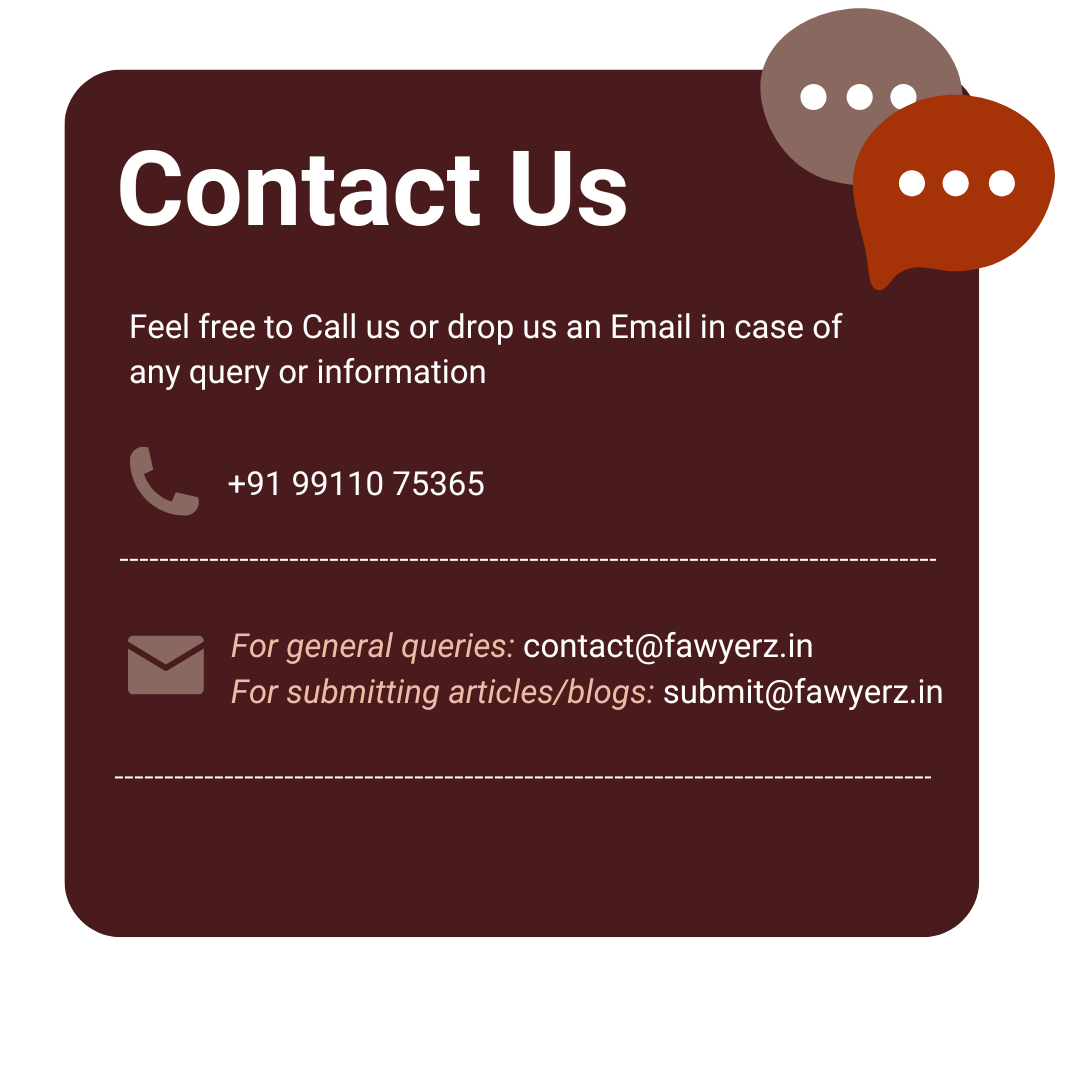Introduction
Copyright is a type of intellectual property right that lets creators keep credit and control over their original work. It encourages people to be creative by giving them only right to copy, share, or adapt what they made. However, this right comes with limitations and is in no way an absolute right. There is an inherent tension that stems from the very fabric of copyright, i.e., the tension between the rights of authors and the collective rights of society to access, learn from, and build upon creative works. To mediate this tension, a doctrine of fair use was carved. The doctrine is a key driving force in striking a balance between the private interests of the creators and the more significant public interest in access to and use of knowledge.
This article will look at origin of doctrine of fair use, how it has changed over time, and how it is interpreted differently in different jurisdictions, especially in the U.S. and India. It will also look at how the doctrine works in the real world, the legal problems it causes, and suggestions for making ensure that fair use keeps ensuring the free flow of ideas and knowledge.
What is Fair Use, and what is its rationale?
According to the Black Law Dictionary, fair use is the permissible and limited use of someone else’s work without their permission. It extends to paraphrasing in a book review, using a quote or two in a parody, etc.
Therefore, the idea includes the reproduction of copyrighted material for a limited and transformative purpose, like making a comment, critique, or parody of a copyrighted work. The theory serves as a defence against claims of copyright violations. It is a tool that makes sure that creativity and information sharing are not impeded.
The doctrine’s premise is rooted in the belief that, on specific occasions, using an infringing copyrighted work may bring greater good than absolute denial.
Too much control over how copyrighted work can be used doesn’t just protect the original; it can also smother what comes next. Creativity suffers when creators, educators, or critics fear building on existing works. Innovation slows down. Fair use is what keeps the creative and intellectual ecosystem alive. If we start narrowing how fair use applies, we risk holding back education, critical voices, and creative reinvention. Giving creators too much control can become a monopoly on ideas, making it harder for cultures to interact and inspire one another. Fair use plays a key role in keeping ideas open and accessible, as it’s what helps creativity stay diverse and democratic. That said, how fair use is treated still depends on where in the world you are as the legal framework for fair use varies in different jurisdictions.
International Footprints: The U.S. and India
United States: A Flexible, Evolving Framework
In the U.S., the doctrine originated from a landmark case of Folsom v. Marsh, where it was ruled that legitimate abridgement of original work cannot be a breach. The judgment also turned out to be the source of the inception of a four-factor test that determines copyright infringement and lays down the framework for doctrine of fair use in the U.S. These four factors were crucial to the Copyright Act of 1976 under Section 107(1). The provision requires courts to appraise the four factors to determine whether a specific use will amount to fair use. These four factors are:
- The purpose and character of the use: In analysing this factor, the court must enquire whether the use is commercial or non-commercial and whether the use is transformative or derivative
- The nature of the copyrighted work: The assessment of this aspect requires the court to consider whether the work is factual or fictional. A fictional work is accorded greater protection, and its use may not be covered under fair use.
- The amount and substantiality of the portion used: This factor evaluates the amount of original work used. If the heart of the work is used, it is less likely to be covered under fair use.
- The effect of the use upon the potential market for or value of the copyrighted work: The factor analyses the harm the new work imposes on the market value of the original work.
These factors are not airtight but flexible and adaptive, allowing courts to carry the assessment holistically while determining whether a particular act will qualify as fair use. The doctrine is elastic, and this was proved by the ruling in Campbell v. Acuff-Rose Music (1994), where the U.S. Supreme Court held that even commercial parody can be fair use if it is transformative. Further, in Authors Guild v. Google Inc. (2015), the court upheld Google’s digitisation of millions of books as fair use, underlining public access and transformative benefit as principle driving forces. These judgements are, therefore, a testament to the doctrine’s capacity to adapt to new forms of media and expression.
India: Fair Dealing with a Growing Fair Use Consciousness
Section 52(1) of the Indian Copyright Act 1957 establishes a fair dealing model for India. Article 9(2) of the Berne Convention and Article 13 of TRIPS are two international conventions that provide the foundation for fair dealing. Instead of a more comprehensive general defence like the U.S. doctrine of fair use, the model is rigid and only offers a list of defences. The clause’s definition of fair dealing includes exclusions for things like private use, reviews or criticism, reporting on current affairs, etc. Indian courts have sometimes interpreted these exceptions broadly, despite the fact that they are more limited than U.S. fair use.
The Kerala High Court held in Civic Chandran v. Ammini Amma (1996) that quoting from or excerpting from a work qualifies as fair dealing, but replication of the entire work does not. The court acknowledged the public interest in permitting derivative works that critique the original. Additionally, the Delhi High Court upheld access over ownership in an academic setting by allowing the photocopying of academic materials for educational purposes in The Chancellor, Masters & Scholars of the University of Oxford v. Rameshwari Photocopy Services (2016).
India has yet to codify a four-factor fair use test. Still, judicial trendlines suggest a movement toward a more liberal and nuanced approach, especially in academic and public-interest scenarios, for instance in the Civic Chandran v. Ammini Amma case, the court held that to adjudge a use as fair dealing, the court must take into account factors like: how much and how significant the material utilised is about remarks or criticism, the reason for the use, and the possibility of rivalry between the two works. A close look at the judgment will present how it mirrors the four-prong test of the fair use doctrine of the U.S.
The Jurisprudential Basis: Understanding Lockean Theory
Locke’s theory of property rights gives us a solid starting point for understanding the basis of copyright and fair use doctrine. Locke’s theory begins with a “natural common”, a shared pool of resources available to all. According to Locke, labour is the distinguishing act that allows an individual to appropriate something from the common and convert it into private property. However, Locke also imposes limits: property should not be hoarded to the detriment of the public (“spoilage proviso”), and there must be “enough and as good” left in common for others.
Applying these principles to intellectual property, Horowitz argues in his article “Rethinking Lockean Copyright and Fair Use” that ideas should remain part of the scholarly commons, while unique expressions of those ideas may be subject to private ownership. The fair use doctrine is a safety net that keeps things in balance. It ensures we can still quote, critique, teach, or parody someone’s work without fearing a lawsuit. It ensures that ownership doesn’t override openness and that innovation can flourish.
His distinction between nature and civil society further illustrates that while individuals have rights in the state of nature, civil society can and should impose limits on those rights for the public good. Therefore, fair use becomes a Lockean tool for regulating private rights to achieve societal benefit. Finding its root in jurisprudence, fair use has become a safeguard for creativity and free expression in a democratic society.
Fair Use in the Digital Era
The internet has completely changed the way we create and consume content. Previously, copyright was tied to physical works, like books, tapes, prints. But in today’s digital world, where creators remix, reuse, and comment on everything from memes to lectures, enforcing copyright has become much more complex. That’s where fair use protects this new, creative way of expression. Online classrooms, MOOCs, and digital libraries all use fair use to make information available to the society. In the fashion law field, for instance, fair use is being used more and more in cases involving parody merchandise, content from influencers, and review of high-end luxury brands. However, it has the adequacy of the doctrine in navigating the dynamics of the digital economy, which is often contested. This is because of the three-layered protection accorded to the creators in the digital space. The first layer is the copyright or related rights granted to the creators for their original work. Technological protection measures (TPMs), the technical means made available to protect their work, account for a second layer. The third layer of protection is the anti-circumvention provisions. For instance, under the Indian Copyright Act, section 65 (A), creators are granted protection against the bypassing or circumvention of technological measures that have been put in place. These systems often sideline fair use entirely. Automated takedowns and strict licensing rules silence users more than protecting rights. Take the DMCA in the U.S., for example; copyright holders often use it to force platforms to remove content without even checking if it qualifies as fair use. As a result, even legitimate educational or transformative content gets taken down before anyone can defend it. Even legitimate educational or transformative uses are often removed before fair use is asserted. Therefore, it is asserted that fair use, though legally present, is now ineffective and inaccessible in various digital contexts.
Fair Use and Metaverse
The metaverse is the next big leap in the digital world, but with it comes a fresh set of legal challenges. The virtual spaces with avatars and immersive performances have led to the blurring of lines between original and derivative work. From virtual classrooms and fan fiction to transformative digital art and parody, users engage with copyrighted content in ways never envisioned by earlier laws. Courts and lawmakers need to consider whether such digital uses are transformative and whether they “materially harm the market for “the original work. In virtual spaces, the “purpose and character of use,” particularly its transformative nature, becomes even more central.
U.S. approach allows for greater adaptability in the metaverse. However, India’s enumerated fair dealing clauses may need modernisation to address immersive and “interactive digital” content.
Just as Locke emphasised the need to leave “enough and as good” in the public, excessive copyright control in the metaverse can restrict the public’s ability to innovate, express, and critique. Fair use must keep evolving to stay relevant in today’s digital world.
Conclusion
The doctrine of fair use bridges the gap between owners of copyright rights and the free flow of knowledge. It is an expression of creativity and access. Like in a seesaw, it is essential to strike a balance with constant adjustments because when one side gets too heavy, the other can’t rise. Similarly, in the world of copyright, it is essential to strike a balance between creativity and access to knowledge, and fair use is the tool that ensures striking that balance. However, due to changing times, the evolution of the doctrine has become inevitable. As noted above, the concept of fair dealing in India is narrow and inflexible. Even though judicial pronouncements have imported the four-pronged test used in the U.S. doctrine, it is paramount that this hybrid model is codified to reduce uncertainty. In the digital context, it is pertinent for platforms like YouTube to fine-tune their automated copyright filters so that the fair use content is not wrongfully flagged and taken down. The rise of the metaverse has also opened a new set of challenges. Our current copyright laws and fair use rules weren’t built with this virtual world in mind, and they’re starting to show their age. It is thus essential that new regulations are introduced that address how fair use will apply in the metaverse. Lastly, and most importantly, creators, students, and teachers need to know what their rights are. Literacy campaigns can play a very important role in giving people the power to use their rights in a responsible way.
As the world moves into the digital world, we must ensure that the law follows and doesn’t lag. Therefore, in the changing times to keep the seesaw balanced, it is importance for the doctrine of fair use to keep up.
References
[1] McKelvey, S., & Grady, J. (2014). On Second Thought … Recent Decisions Continue to Reshape Intellectual Property Landscape. Sport Marketing Quarterly, 23(3), 176-179.
[2] Schwabach, A. (2021). The Internet Archive’s National Emergency Library: Is There An Emergency Fair Use Superpower? Northwestern Journal of Technology and Intellectual Property, 18(2), 187-216.
[3] Wagner, G., & Kohl, A. T. (2012). Visual Resources Association: Statement on the Fair Use of Images for Teaching, Research and Study. http://online.vraweb.org/vrab/vol38/iss1/5/
[4] Horowitz, Steven J — “Rethinking Lockean Copyright and Fair Use” [2005] DeakinLawRw 10; (2005) 10(1) Deakin Law Review 209, n.d.
[5] Zhang,S. (2024). Comparing Fair Dealing with Fair Use: Why Fair Dealing Can Better Balance Copyright Interests?. Advances in Economics, Management and Political Sciences,75,241-249.
[6] Parchomovsky, G., & Weiser, P. J. (n.d.). Beyond fair use. Colorado Law Scholarly Commons. https://scholar.law.colorado.edu/faculty-articles/234/
[7] Berne Convention, Art. 9(2) https://www.wipo.int/wipolex/en/text/283698
Diya Kumar is a fashion lawyer and the founder of Legal Luxe, a boutique law firm specialising in fashion, luxury, and intellectual property law.
She holds an LL.M. in Intellectual Property from the University of Cambridge and has previously served as a faculty member at OP Jindal Global University.
Diya is passionate about educating emerging designers and brands on their legal rights and regularly creates content for her platform, Your Fashion Law Guide, to make law accessible and engaging. She is also an active speaker and writer in the field of creative industry law.
- This author does not have any more posts.


